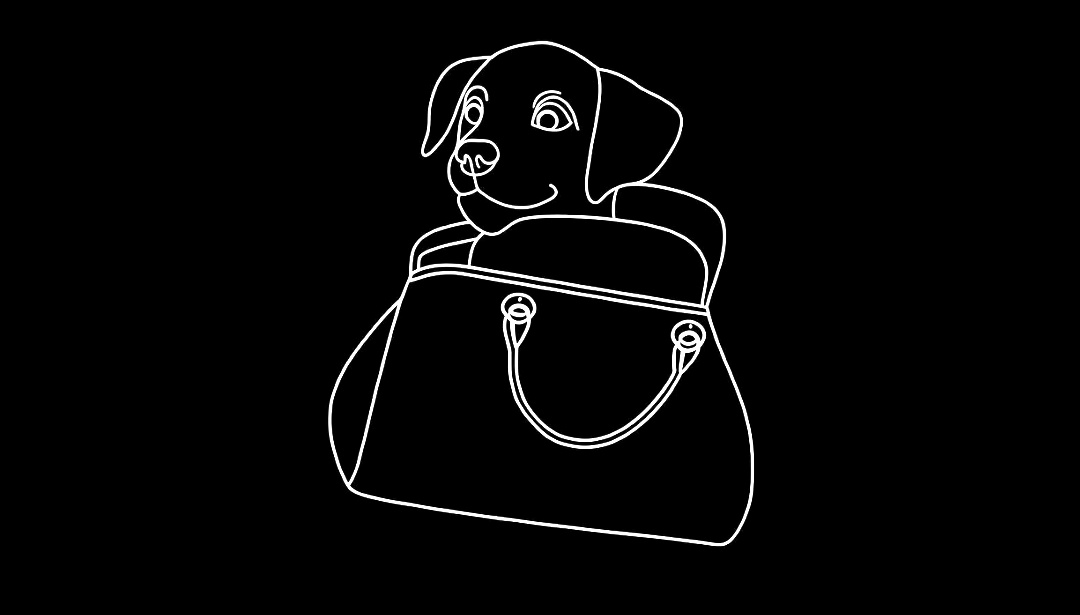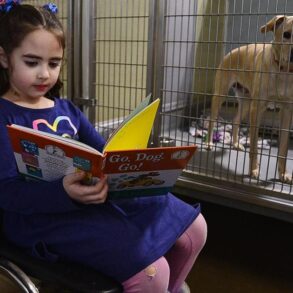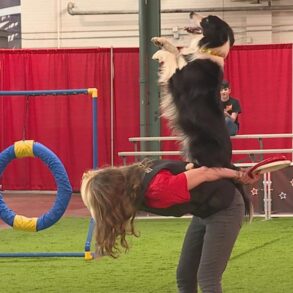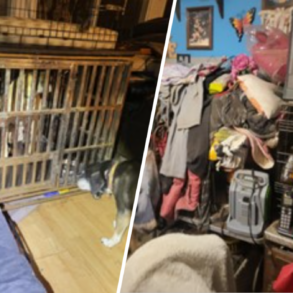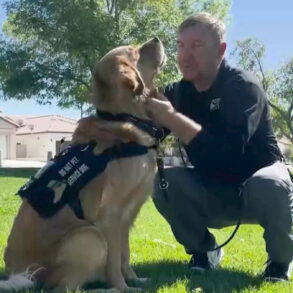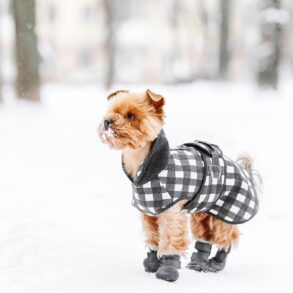Have you ever tried to sit next to your dog and noticed their body stiffen as you approach? Maybe they stare you down or even snarl if you dare sit by them. Chances are, they’re resource guarding the couch.
It’s not uncommon for dogs to resource guard food, toys, or their bed. It’s often what they hold dearly to them, with the Humane World for Animals previously explaining it’s an attempt to assert ownership.
Resource guarding can come from a place of insecurity, Amanda Goble, vet team manager at Animals Asia, tells Newsweek. She says the dog “may have developed a fear that they’ll lose access to the couch.” While it can happen to any dog, it’s most common in homes with multiple dogs or households with children.
“The behaviors and signals involved in resource guarding can be very subtle, and any behavior modification needs to be done in a very thoughtful way,” Goble said. “It’s likely that by the time you realize there’s a problem with resource guarding the couch, the issue has been developing for a while.

A stock image of a dog baring its teeth while lying down on the couch.
Sonja Rachbauer/Getty Images
She continued: “We often miss the early signals a dog uses to express their discomfort and anxiety. As communicating quietly through body language didn’t work, the dog tries loud communication, such as growling or showing teeth.”
There are several behaviors that owners can look out for in these instances. If a person or another dog approaches a pup who is resource guarding, Goble suggests they will:
- Become tense
- Shift their position, moving into a less relaxed pose
- Stare at the approaching dog or person
- Give a side eye, looking sideways with wide eyes that may show the whites
- Get up to face the oncoming dog or person
- Begin to show their teeth, grumble, or growl
- Bark when someone approaches the couch
- Bite or snap
This is echoed by dog behavior and training expert Nicole Kohanski, who told Newsweek that one of the “first signs of guarding is stiffening.” Owners should also be aware if they see their four-legged friend hovering over the object they’re protecting, or hard stares, snarling, and lunging.
Ultimately, if a dog is pushed to their limit, they may make attempts to bite whoever is encroaching their space on the couch.
These behaviors can begin at any age and to any breed. Goble explains that it can be a result of a big life change or stressful event that heightens their insecurity. However, sometimes there’s no way of knowing the real cause.
It’s important to remember that dogs aren’t resource guarding to be bad or greedy, so owners should refrain from punishment.
“If a dog shows signs of guarding the couch, do not scold, spank, or otherwise punish them,” Goble told Newsweek. “Remember, guarding the couch doesn’t happen because the dog has a bad attitude, it’s because they feel insecure or worried about their situation.
“Punishment is the worst response because it teaches the dog to not express their discomfort. It also builds an association between you and scary things—exactly the opposite of what your canine friend needs, which is support and understanding.”
How to Reduce Resource Guarding
Both Goble and Kohanski encourage owners to work with a qualified dog trainer to overcome their dog’s anxiety and to provide them with a sense of security.
However, there are still steps that can be taken to ameliorate the problem.
Kohanski recommends preventing access to the sofa unless you’re practicing exercises that will help improve the situation. “This important step helps the dogs not get better at guarding by practicing the behavior even more,” she said.
Owners should also use positive reinforcement to teach an “off” command in order to make progress.
Kohanski continued: “Practice good things happening when the person approaches the sofa. Doing some treat tosses from a distance that the dog is not yet guarding will help the dog feel better about approaches. It’s important to do this at distance from which there are no signs of guarding, so you don’t inadvertently reinforce the behavior.”
Regardless of how a dog is communicating, it’s vital to listen to them and give them space. If you can do that, you’ll show the dog that you respect their communication, Goble explains.
She told Newsweek: “The sooner you can find a qualified trainer, the sooner your dog will be able to overcome their resource anxiety and share the sofa with a sense of safety and security.”
Do you have funny and adorable videos or pictures of your pet you want to share? We want to see the best ones! Send them in to life@newsweek.com and they could appear on our site.
This post was originally published on this site be sure to check out more of their content.
